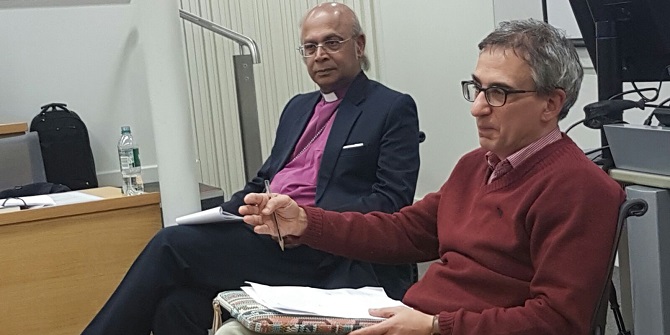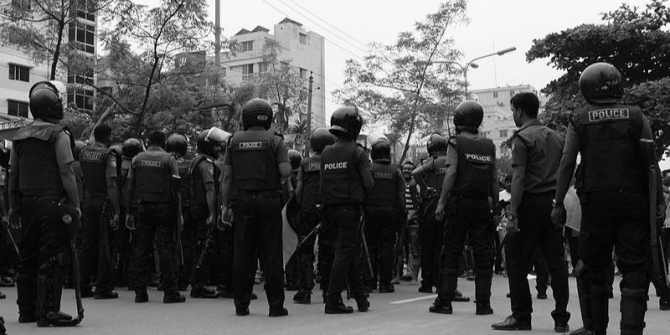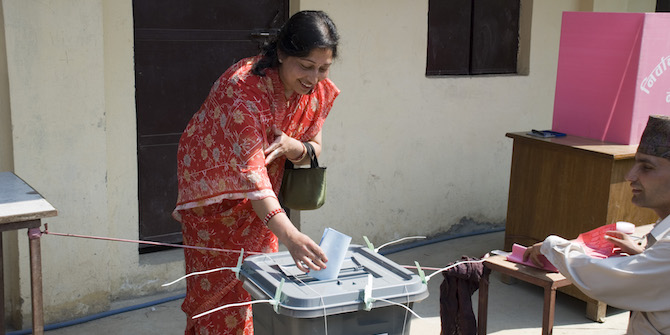 The scale of the contribution made by Indian soldiers in the First World War is increasingly recognised, but their experiences get less mainstream attention. Erica Wald offers an insight into the their shock at the scale of battle, the shortages they faced and the ‘recycling’ wounded soldiers employed by British leaders struggling for manpower in the early years of the war.
The scale of the contribution made by Indian soldiers in the First World War is increasingly recognised, but their experiences get less mainstream attention. Erica Wald offers an insight into the their shock at the scale of battle, the shortages they faced and the ‘recycling’ wounded soldiers employed by British leaders struggling for manpower in the early years of the war.
This post forms part of a series on India and World War I. Click here to view more posts.
In late September 1914, Indian troops began arriving at the southern French port of Marseilles. By late November, two infantry and two cavalry divisions had arrived to relieve the British II Corps. Battalions of Gurkhas, Sikhs and Garhwalis, as well as mixed battalions (which included Punjabi Muslims, Rajputs and Pathans), landed and were sent north to the sector that included Neuve Chapelle and La Bassée. Indian units were quickly used to reinforce the British Expeditionary Force (BEF) and by the end of 1914, almost a third of the BEF was drawn from the Indian army. However, losses came swiftly and heavily; while the average Indian battalion was 764 men strong on arrival in Europe, by early November, this number had already dropped to an average strength of 550. Whole companies were swept away, while others lost the British officers who had travelled with them from India. The Indian army’s training had focused on what was required for frontier campaigning. For troops used to small-scale skirmishes, the experience of total war came as a great shock. Men wrote to their friends and families assuring them that the likes of this war had never been seen before – and never would again. The damp cold of the trenches, high explosive shells, poison gas and machine guns represented a wholly new form of warfare for them. Even seasoned warriors found the scale of fighting near-apocalyptic. Some Muslim soldiers compared the fighting to the Battle of Karbala, while Hindu troops referenced the great battles of the Mahabharata. Compounding the scale of the fighting and heavy losses was the fact that resources and support for the Indian troops fell woefully short of what was required. Essential supplies, from rifles to signalling and medical equipment were in short supply. This was evident in almost every respect. Initially, each Indian battalion was only given two machine guns. Warmer winter uniforms arrived only in late December, leaving the men in their thin khaki drill until that time. When clouds of poison gas were sighted during the Second Battle of Ypres in April 1915, Indian troops were without gasmasks, leaving the men of Wilde’s Rifles to improvise their own protection by covering their noses and mouths with the ends of their turbans – wet first and dipped in chloride of lime (Mason, p.416). Field hospital provisions were similarly Spartan. The Indian sepoys who served in Europe during the First World War were keenly aware of their conditions of service, benefits and pay as they were of the differences between themselves and other troops. For these troops, there was a carefully weighted balance between their obligations to the army and King Emperor and those of the army and king Emperor to them. The latter obligations included not just their pay and equipment, but treatment in the field of battle and their medical care when injured. Wounded men found time to write to friends and family describing their condition and care. Medical provisions for the men began to improve amid growing anxiety about potential discord among the troops (and, indeed, political agitation in India). A relief fund, the Indian Soldiers’ fund, was established to collect gifts from the public, ‘suitable comforts’ for the men in the battlefield and to provide medical assistance. Dedicated stationary hospitals were established for those Indian wounded evacuated to England. In Brighton, both the workhouse and the Pavilion were converted into hospitals while in Brockenhurst, the Lady Hardinge Hospital, with its barrack-like rows of hospital wards was established. In general, the men recovering in the Brighton Pavilion spoke most favourably of their care.

However well they were treated, one of the most frequent complaints in the men’s letters was the fact that the ‘lightly’ wounded were, on recovery, sent back to the front lines. With troop strength stretched and Kitchener’s ‘New Armies’ not yet available, even men who had been wounded on multiple occasions were patched up and sent back in to battle. In February 1915, one Garhwali soldier wrote with resignation of his impending return to the front, acknowledging that this was due to severe manpower shortages. After being wounded in the battle of Neuve Chapelle, another soldier lamented to his brother that ‘…only the lame and halt with one leg and broken bones are sent home. No sound man can return.’ (Omissi p.51) This recycling of the wounded almost certainly played a part in the pronounced drop in the morale of Indian troops by 1915. For many of the men, this policy was a violation of the Crown’s unwritten obligation to them. When newly-trained reinforcements from Kitchner’s army did become available, this policy was adjusted – but only just before the Indian infantry left for Mesopotamia in the autumn of 1915. About the Author  Erica Wald is a Lecturer at Goldsmiths, University of London and former Fellow at the LSE in the Department of International History. She is the author of Vice in the Barracks: Medicine, the Military and the Making of Colonial India, 1780-1868 (Palgrave, 2014).
Erica Wald is a Lecturer at Goldsmiths, University of London and former Fellow at the LSE in the Department of International History. She is the author of Vice in the Barracks: Medicine, the Military and the Making of Colonial India, 1780-1868 (Palgrave, 2014).







